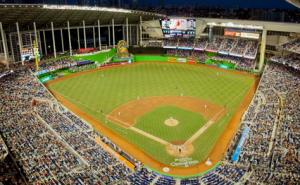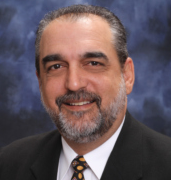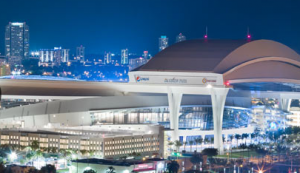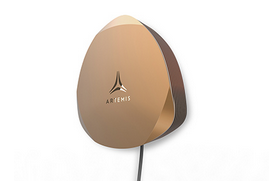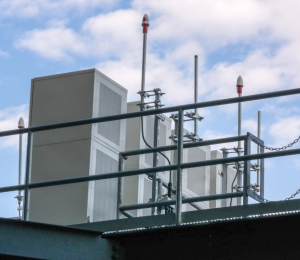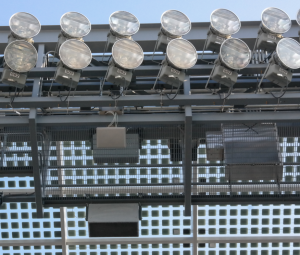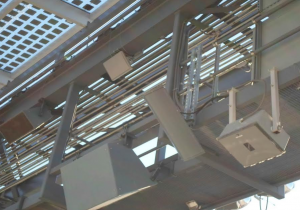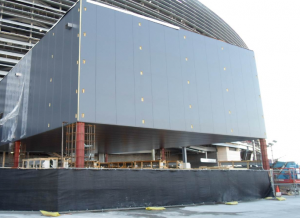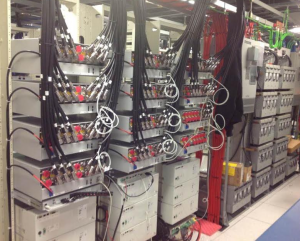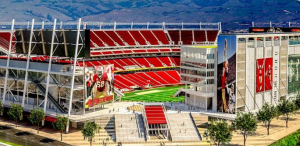“When it came to DAS, we were ahead of the game,” said David Enriquez, senior director of information technology for the Miami Marlins, in a recent phone interview. Well before the 37,000-seat stadium opened in 2012, Enriquez said the Marlins’ IT team was researching and planning for enhanced cellular connectivity – even before “DAS” became a hot industry acronym.
“We planned for a DAS even before they were in vogue,” said Enriquez. “We saw it as a necessary evil.”
With the iPhone and all its cataclysmic changes already in motion, Enriquez said the Marlins wanted to avoid what had happened recently at another arena that opened in the Sunshine state without good connectivity.
“What we didn’t want to see was something like what happened in Orlando, when they opened the arena [in 2010], it had bad coverage, and they were crucified in the press for bad [cellular] service,” Enriquez said. “We said, what we’d love to have is the complete opposite of that.”
At the opening of Marlins Park, the connectivity inside the walls was better than most, with a full-park Wi-Fi network using gear from Meru Networks and a neutral-host DAS deployed by integrator ExteNet Systems. And though Wi-Fi often gets the headlines when there is talk about stadium networks, in many facilities like Marlins Park, the DAS is an equal workhorse, since many fans still either don’t know how or don’t take the time to switch their devices over to Wi-Fi.DAS is the workhorse
According to Enriquez, on an average night at the ballpark the Wi-Fi network will handle 40 percent of the wireless traffic, with the DAS taking care of the other 60 percent. That may be because of lack of knowledge, or perhaps satisfaction with the signal the DAS is giving them, Enriquez said.
“Early on, most people, honestly, did not know how to change [their phone] to Wi-Fi,” Enriquez said. Most fans, he added, weren’t typically streaming lots of video — they may, he said, have used the MLB At Bat app to look at a replay or two, but that could all be handled by DAS. “That trend is changing though and we are seeing much more video traffic, especially with the younger generation of guests,” Enriquez said.
“The truth is, many users may not take the time to switch [to Wi-Fi],” Enriquez said. “If they’re getting 4 to 5 bars on their cellular signal, they’re happy.”Though the Marlins and ExteNet now have five major carriers on their DAS – AT&T, Verizon Wireless, Sprint, T-Mobile and MetroPCS (now part of T-Mobile), Enriquez said there was a bit of the chicken and egg problem at the start.
“Early on, nobody wanted to be the first on (the neutral DAS),” Enriquez said. “ We [the stadium] were just another node. Now, 3 years later, we are a central node in the Miami area and all the carriers are here. We’re a very central location.”
Staying in neutral
Enriquez, who has considerable experience in the large-venue IT world, said that having a neutral host for the DAS eliminates any potential concerns about favoritism between service providers. Even though costs to the team or stadium may be lower if they allow a carrier to take over DAS deployment, Enriquez said that for the Marlins a neutral host was worth the extra price.
“We didn’t want an advantage to be held by one carrier,” Enriquez said. Even if a carrier says it will act as a neutral host, when one carrier owns the deployment, others can “find it hard to believe there will be an equal time slice” when it comes to antenna access.
“We just wanted to avoid that, and make it irrelevant [as a concern],” Enriquez said.
The choice of bringing in an integrator like ExteNet, he said, provides an additional streamlining of operations, as there is now a single point for vendors to interact with to work out technology and deployment issues.
“We wanted to deal with one vendor – I didn’t want to be the middleman between the carriers and the Marlins,” Enriquez said. In that regard, he said, ExteNet has been “wonderful” as a neutral host. “They deal with all the carrier issues that I have no desire to deal with,” Enriquez said.
Less space needed for DAS upgrades
And even as fan cellular bandwidth use continues to grow – requiring carriers to constantly upgrade their systems – Enriquez said that DAS infrastructure is benefiting from improved technology to the point where even as carriers upgrade, their head end footprint is shrinking.
AT&T, for instance, has upgraded its DAS presence in Marlins Park four times over the past 2 years, Enriquez said, to the point where the carrier now has coverage for all four frequency bands. “They [AT&T] have done quite a bit to expand their coverage,” Enriquez said.
Still, the Marlins Park DAS head end hasn’t had to find new space beyond its original 1,500-square foot enclosure.
“Every time someone comes in to replace gear, we have a smaller [DAS] footprint,” Enriquez said. “It’s not going to eat you out of house and home anymore.”
Like other stadium IT directors, Enriquez is still surprised by the amount of wireless traffic generated by the fans who come to the games. “It’s incredible to see the need [for bandwidth” grow,” he said. “But people continue to give our network a thumbs up, we see that in our guest comments all the time. I just don’t know what we would do without the DAS.”
